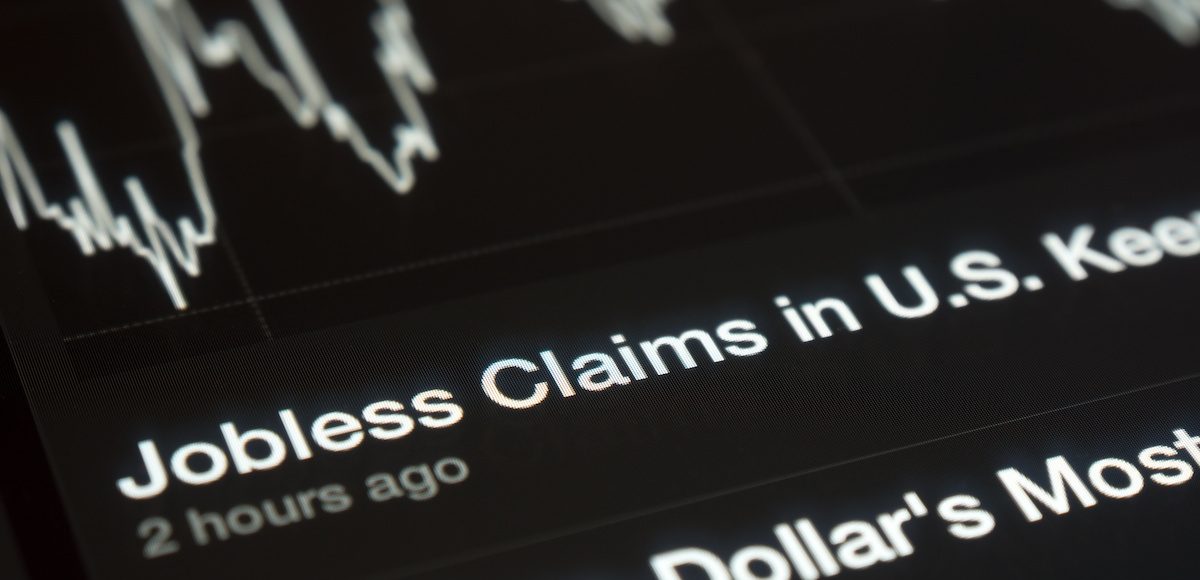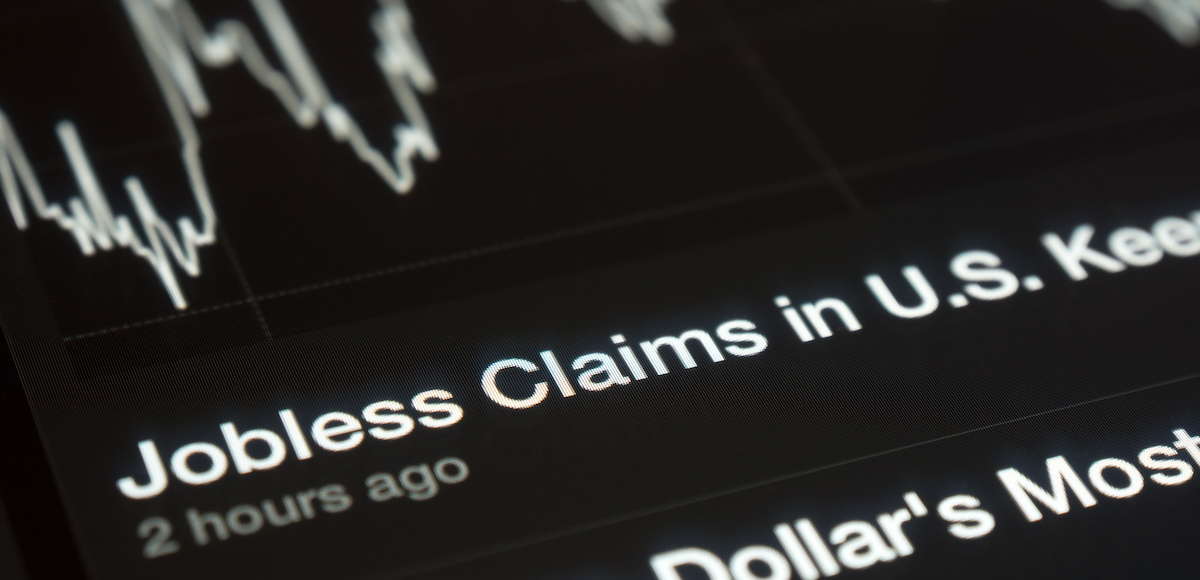

U.S. jobless claims graph on a tablet screen. (Photo: AdobeStock)
The U.S. Labor Department (DOL) reported first time jobless claims rose 5,000 to a seasonally adjusted 215,000 for the week ending October 20. The 4-week moving average came in at 211,750, unchanged from the previous week’s unrevised average.
The advance seasonally adjusted insured unemployment rate fell 0.1% to a very low 1.1% for the week ending October 13. The advance number for seasonally adjusted insured unemployment during the week ending October 13 came in at 1,636,000, a decline of 5,000 from the previous week’s revised level.
This is the lowest level for insured unemployment since August 4, 1973 when it was 1,633,000. The previous week’s level was revised up 1,000 from 1,640,000 to 1,641,000.
Meanwhile, the 4-week moving average came in at 1,646,500, a decline of 6,750 from the previous week’s revised average. This is the lowest level for this average since August 11, 1973 when it was 1,627,250. The previous week’s average was revised up by 250 from 1,653,000 to 1,653,250.
Hurricane Michael had no initial impact on weekly jobless claims and only margin impact was expected for the week ending October 20. The forecasts ranged from 205,000 to 220,000, with the median forecast calling for 212,000.
No state was triggered “on” the Extended Benefits program during the week ending October 6.
The highest insured unemployment rates in the week ending October 6 were in Alaska (1.8), New Jersey (1.8), Puerto Rico (1.7), California (1.6), the Virgin Islands (1.6), Connecticut (1.5), Pennsylvania (1.4), and the District of Columbia (1.3).
The largest increases in initial claims for the week ending October 13 were in California (+2,597), Tennessee (+689), Wisconsin (+637), Kansas (+589), and Minnesota (+433), while the largest decreases were in Kentucky (-6,246), North Carolina (-2,944), Michigan (-2,124), Illinois (-1,078), and Georgia (-850).





